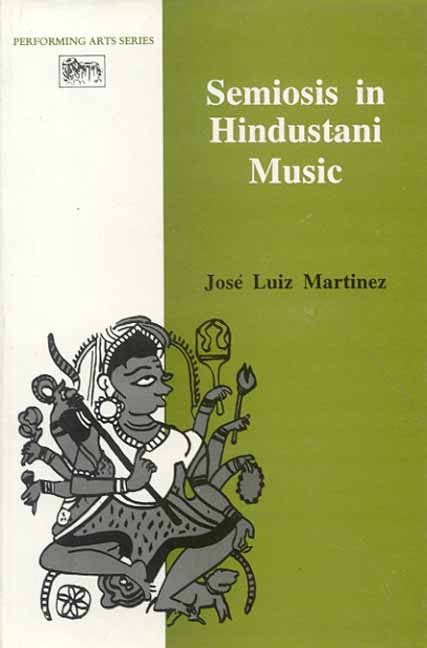Semiosis in Hindustani Music: The Book Does Serve The Purpose Of Provoking Interest In This Newly Found Approch Of Semiosis To Music.
Semiosis in Hindustani Music: The Book Does Serve The Purpose Of Provoking Interest In This Newly Found Approch Of Semiosis To Music. - Paperback is backordered and will ship as soon as it is back in stock.
Couldn't load pickup availability
For thousands of years music in India has been considered a signifying art. Indian music creates and represents meanings of all kings, some of which extend outwardly to the cosmos, while others arise inwardly, in the refined feelings which a musical connoisseur experiences when listening to it. In this book the author explores signification in Hindustani classical music along a two-fold path. Martineq first constructs a theory of musical semiotics based on the sign-theories of Charles Sanders Peirce. He then applies his theory to the analysis of various types of Hindustani music and how they generate significations. The author engages such fundamental issues as sound quality, raga, tala and form, while advancing his unique interpretations of well-known semiotic phenomena like iconicity, metalanguage, indexicality, symbolism, Martinez's study also provides deep insight into semiotic issues of musical perception, performance, scholarship, and composition. An specially innovative and extensive section of the book analyzes representations in Hindustani music in terms of the
Indian aesthetic theory of rasa. The evolution of the rasa system as applied to musical structures is traced historically and analyzed
semiotically. In the light of Martinez's theories, Hindustani music reveals itself to be both a delightfully sensuous and highly sophisticated system of acoustic representations.
Review(s)
".........for the non-Indian the volume constitutes a welcome and significant contribution to the understanding og Hindustani music and
indeed Indian music as whole." - Asian Folklore Studies
About the Author(s)
-
Pages
-
Edition
-
Size
-
Condition
-
Language
-
Weight (kg)
-
Publication Year
-
Country of Origin
-
Territorial Rights
-
Reading Age
-
HSN Code
-
Publisher




